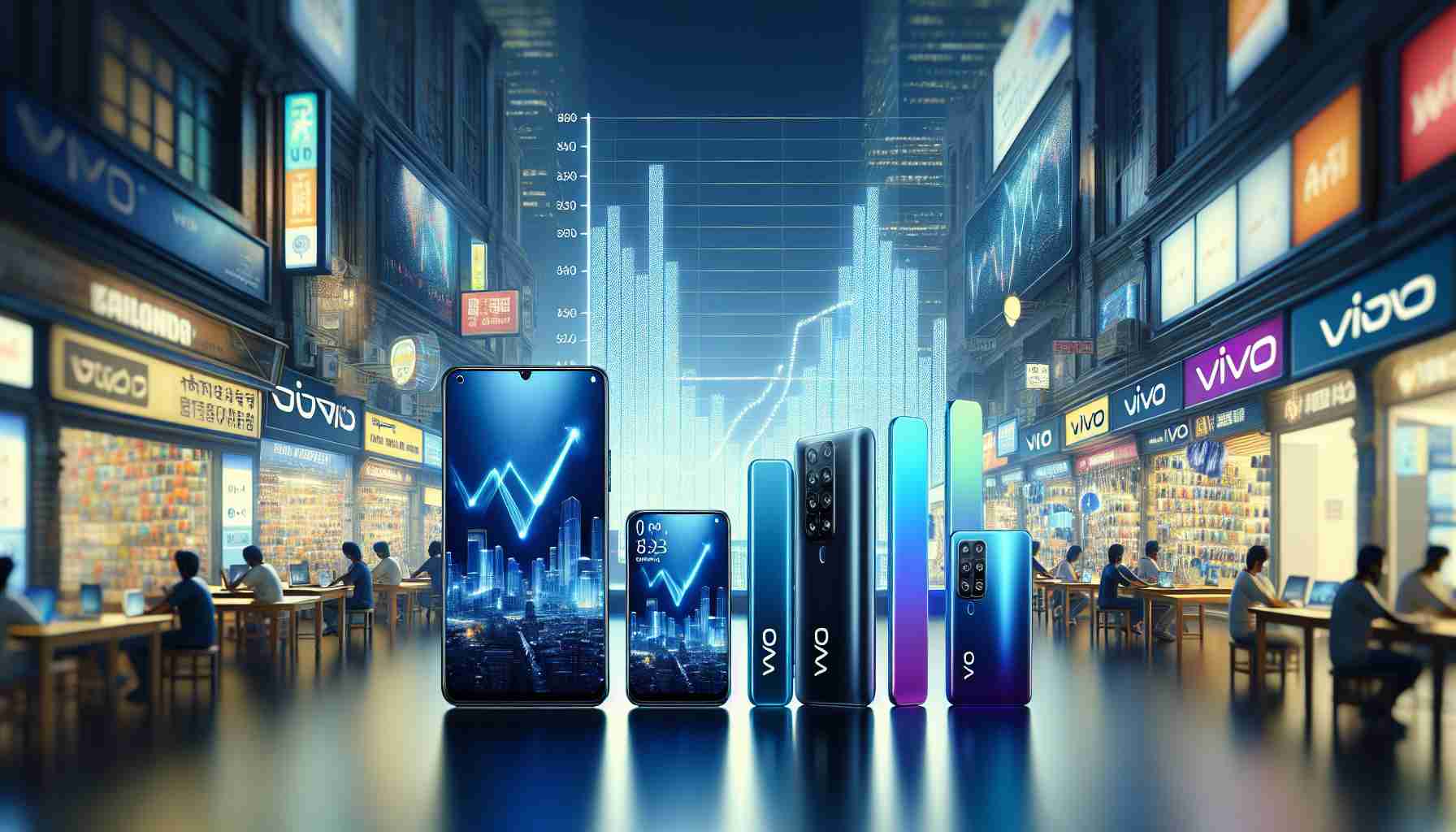India Witnesses Notable Growth in Smartphone Market with a Surge in 5G Adoption
India’s smartphone landscape has seen a solid rise in the first quarter of 2024, showcasing an 8% year-on-year increase in the number of devices shipped within the nation. This notable growth points to a vibrant start to the year for players in the smartphone industry.
A top highlight of Q1 2024 has been the ascendancy of Chinese tech giant Vivo, which has taken the crown as the premier smartphone manufacturer in India. A jump from the previous year’s 17.5% to a current market share of 19.2%, indicates Vivo’s strengthening grip on the market. Experts suggest that Vivo’s strategic emphasis on innovative camera technology and alluring design elements played a significant role in this achievement.
Xiaomi Secures Second Place with Impressive Growth
Xiaomi has successfully secured the second position with a significant leap of 28% in shipment volumes from the last year, marking its market share at 18.8%. Xiaomi’s streamlined product assortment coupled with a robust presence in offline sales channels contributed to this impressive growth.
Samsung Drops but Excels in Value Share
Despite a decline in market share from 20.3% to 17.5%, Samsung now sits at the third spot. Nonetheless, Samsung has clinched the highest market value share due to impressively high average selling prices, largely driven by their sophisticated Galaxy S24 series.
Oppo and Realme Maintain Market Positions
Moreover, Oppo and Realme hold steady in their market standings, capturing the fourth and fifth ranks respectively. Realme’s shipment shares saw a healthy 18% annual growth, likely spurred by their emphasis on visual and photographic excellence with their latest series.
Nothing and Motorola Experience Remarkable Shipment Growth
In a similar vein, Nothing, with its charismatic leadership under Carl Pei, reported a staggering 144% growth, while Motorola witnessed a 58% increase, both attributing their success to user preferences for unique designs and pure software experiences.
5G Technology and Offline Sales Dominate the Market
With over 70% of smartphones shipped boasting 5G capabilities, the technology’s dominance in the Indian market has never been clearer. Additionally, despite the numerous online sales events, offline retail outlets continue to dominate, contributing to 64% of total smartphone shipments in Q1 2024. This trend underscores the persistent consumer preference for in-store purchasing experiences in India.
Important Questions and Answers:
1. What has led to Vivo becoming the top smartphone brand in India in Q1 2024?
Vivo’s ascent to the top position in India’s smartphone market in Q1 2024 can be attributed to their strategic focus on innovative camera technology and design, which resonated with consumer preferences.
2. How has Xiaomi managed to secure the second position in the Indian market?
Xiaomi’s growth to secure the second position is due to its streamlined product portfolio and a strong offline sales presence, which have been critical factors in expanding its market share.
3. Why did Samsung’s market share drop even though it leads in market value share?
Samsung experienced a reduction in market share likely due to intense competition; however, it maintains the lead in market value share thanks to the high average selling prices of their premium Galaxy S24 series.
4. What trends are influencing the growth of the smartphone market in India?
The Indian smartphone market growth is influenced by the surge in 5G adoption and the dominance of offline sales, indicating a strong preference for in-store shopping experiences.
Key Challenges or Controversies:
– Competition: Intense competition among smartphone brands could lead to price wars, reducing profitability for companies.
– Market Saturation: As more people already own smartphones, finding new areas of growth may become challenging.
– Dependency on Foreign Brands: High market share for Chinese brands like Vivo and Xiaomi shows a dependency on foreign brands, which could become a point of contention in protectionist trade environments.
Advantages:
– Consumer Choice: Increased competition means more choices for consumers, fostering innovation and price competitiveness.
– Technology Adoption: The surge of 5G adoption in India points to a quicker uptake of new technologies, preparing the market for future tech advancements.
Disadvantages:
– Economic Vulnerability: India’s heavy reliance on Chinese smartphone brands could create economic vulnerabilities if geopolitical tensions escalate.
– Retail Pressure: The dominance of offline sales poses challenges for e-commerce platforms and could pressure small retailers struggling to compete with larger stores.
For further reading on the global smartphone industry and 5G technology, you can visit the following links to their main domains:
– GSM Arena for smartphone news and reviews.
– Qualcomm for 5G technology insights and advancements.
Please note, my ability to verify the validity of URLs is based on my last update and I cannot guarantee that these URLs are 100% valid beyond that point.
